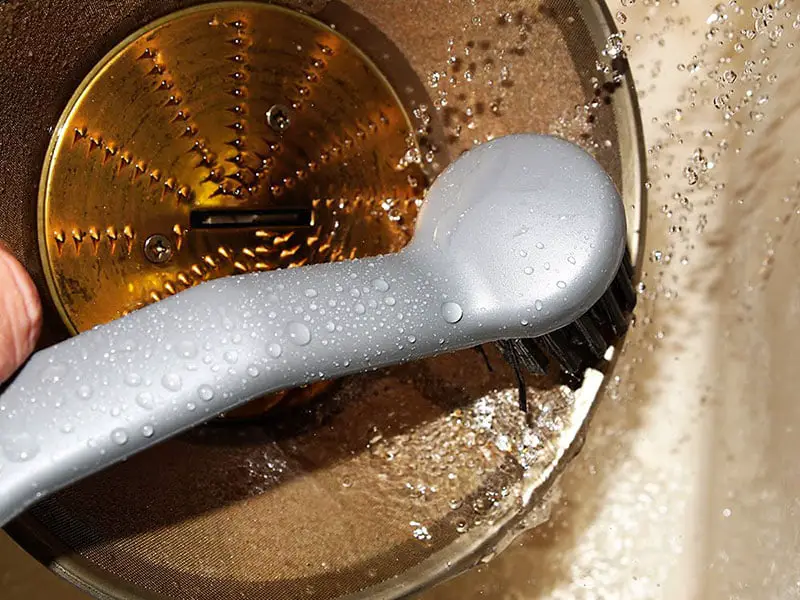Cleaning a juicer is nobody’s idea of fun. Unfortunately, it’s also a very necessary part of the process. Never forget to clean up your juicer when you’re done.
If you neglect cleaning, remnants of ingredients can get trapped in the blades of your juicer. This blunts the blades and reduces performance. You could also find pieces of your ingredients trapped in the smaller components of the juicer. These may end up in your next drink.
Cleaning a juicer does not need to be complicated, or time-consuming. If you are particularly concerned about cleaning, check out my buyers guide for easy-to-clean juicers. As you’ll see, centrifugal juicers are typically quicker to clean up. You can still get a masticated juicer looking as good as new with little effort, though.
You will need
Firstly, consider the parts you’ll need for the job. These
include:
- A bowl of hot, soapy water.
- A sponge that you don’t mind getting dirty.
- A toothbrush (not an active one from your bathroom!), or a specialist cleaning
brush. Many juicers are packed with the latter. - A spatula, or very blunt knife.
- White vinegar and an empty spray bottle, if
you’re faced with particular tough and stubborn stains.
How to Clean a juicer (Step by Step Guide)
Obviously, the first step is to unplug your juicer. I hope this does without saying, but safety first. Never attempt anything involving water around a live electrical supply.
Once your juicer is unplugged, you can start the cleaning
process. This usually involves disassembling your juicer. Until you’re
comfortable doing this, follow the instruction manual to the letter. If you
break small parts of your juicer, it may not function anymore. Not all
appliance warranties cover human error, and replacement parts can be expensive.

Line up your parts, and prepare to wash them one by one.
Start with the biggest, most obvious parts. The jug that collects pulp from
your ingredients, for example. Empty your pulp – ideally into a compost pile or
recycling bin – scraping out the contents with a spatula. Once you are
confident that the jug is empty, start washing with soapy water.
Pulp can sometimes be stubborn. This is why I suggest that
you bring a toothbrush into play. Use this toothbrush to scrub the nooks and
crannies of your jug. Once it’s ship-shape and shiny, wash off any traces of
soap and leave the jug to dry.
Next, tackle the individual parts of your juicer. Wash these
very delicately, and double-check that it’s safe to get them wet. Pay
particular attention to the blades of your juicer. Again, use a toothbrush on
these. It’s so important that your blades are kept sharp and functional.
If you can’t get your blades clean with just soap and water,
you’ll need a more potent solution. Take your empty spray bottle, and fill it
with white vinegar and water. Two-thirds of a cup of vinegar and one third of a
cup of water should do it. Spray this solution on the blades, and let it sit
for a minute or two. You can then wash it off, and your blades should be good
as new.
Finally, run a damp cloth over the body of your juicer with
a damp sponge. There will always be traces of juice on your appliance, and you
don’t want these to stain. After this, you’re done! Carefully reassemble your
juicer, and you’re ready to use it all over again.

